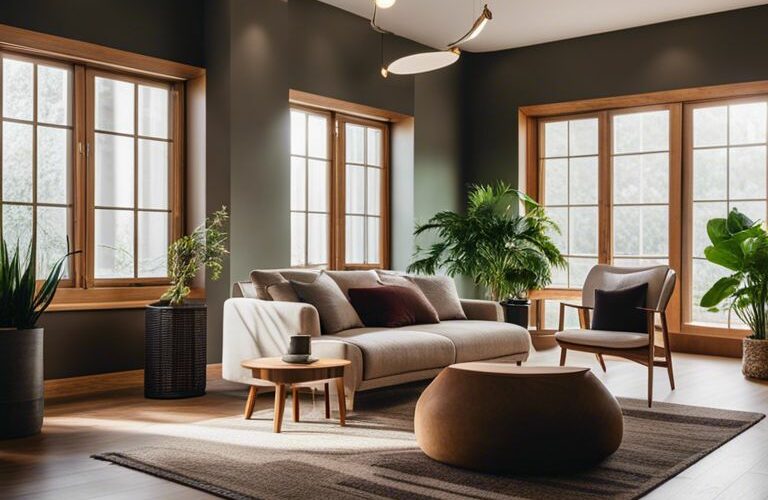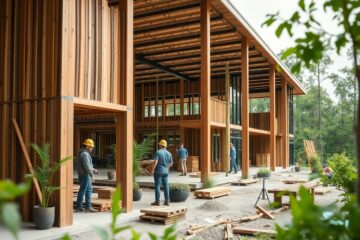Most interior designers and homeowners agree that wood flooring is a timeless and environmentally responsible choice for design projects. Not only does it add warmth and character to any space, but it is also a sustainable option that helps reduce our carbon footprint. With proper maintenance, wood floors can last for decades, making them a durable and cost-effective investment for any home. Additionally, the natural beauty of wood complements any decor style, from traditional to modern, making it a versatile choice for a wide range of design preferences.
Table of Contents
Types of Wood Flooring
To create a stunning and environmentally responsible design solution, selecting the right type of wood flooring is crucial. There are various options available, each with its own unique characteristics and benefits. Let’s explore the different types of wood flooring to help you make an informed decision for your space.
| Solid Hardwood | Engineered Wood Flooring |
Solid Hardwood
Any homeowner looking to add a touch of elegance and warmth to their space should consider solid hardwood flooring. This type of flooring is made from a single piece of wood and offers a timeless appeal that can enhance the beauty of any room. Solid hardwood is known for its durability and can be sanded and refinished multiple times, making it a long-lasting investment.
For those concerned about environmental impact, it’s essential to choose solid hardwood flooring from sustainable sources. Look for certifications such as FSC (Forest Stewardship Council) to ensure that the wood has been responsibly harvested.
Engineered Wood Flooring
Solid hardwood flooring may not be suitable for every space, especially areas with fluctuating humidity levels like basements. In such cases, engineered wood flooring is a versatile and practical alternative. Solid hardwood, the top layer, provides the same aesthetic appeal as solid hardwood flooring but with added stability against moisture and temperature changes.
Hardwood lovers can still enjoy the beauty of natural wood with engineered wood flooring, which consists of multiple layers of wood pressed together. The bottom layers provide structural support, while the top layer showcases the desired hardwood species for a premium look.
Assume that you want a flooring option that combines the luxurious appearance of solid hardwood with enhanced durability and resistance to moisture, engineered wood flooring is an excellent choice.
Reclaimed Wood Flooring
Wood enthusiasts seeking a sustainable and unique flooring option should consider reclaimed wood flooring. This type of flooring is crafted from recycled wood sources, such as old barns, factories, or warehouses, giving it a distinctive character and history.
With reclaimed wood flooring, no two planks are the same, adding a one-of-a-kind touch to your space. Embrace the imperfections and patina of reclaimed wood, knowing that you are reducing waste and contributing to sustainable design.
Bamboo and Cork – Alternative Wood Flooring
To explore alternative wood flooring options, consider bamboo and cork as eco-friendly alternatives to traditional hardwood. Bamboo is a rapidly renewable resource that offers exceptional durability and a unique, contemporary look. Cork, harvested from the bark of cork oak trees, provides a cushioned feel underfoot and is resistant to mold and mildew.
When choosing bamboo and cork flooring, look for products that are formaldehyde-free and have low VOC emissions to ensure a healthy indoor environment. These sustainable options are perfect for environmentally conscious homeowners looking for innovative flooring solutions.
Benefits of Wood Flooring
Aesthetic Value and Versatility
Not only does wood flooring add a touch of warmth and elegance to any space, but it also offers a wide range of options in terms of colors, patterns, and finishes. For those looking to create a classic or modern look, wood flooring provides the perfect base to complement any interior design style. Its versatility allows for seamless integration into various aesthetics, from traditional to contemporary.
Moreover, wood flooring can be easily customized to suit individual preferences, whether it’s a sleek, uniform appearance or a more rustic, distressed look. The natural beauty of wood enhances the overall appeal of a room and creates a welcoming atmosphere that never goes out of style.
Durability and Longevity
Flooring that is made from quality hardwood is known for its exceptional durability and longevity. With proper maintenance, wood floors can last for generations, making them a wise investment for homeowners. Unlike carpet or vinyl flooring that may need to be replaced every few years, hardwood floors can withstand heavy foot traffic and remain in excellent condition for decades.
Furthermore, wood flooring is easy to clean and maintain, requiring minimal effort to keep it looking like new. Its resilience to wear and tear makes it a preferred choice for high-traffic areas in residential and commercial settings.
Durability and Longevity: The dense structure of hardwood makes it resistant to scratches, stains, and damage from furniture or pets, ensuring a long-lasting flooring solution for any space.
Health and Indoor Air Quality
On top of its visual appeal and durability, wood flooring also offers significant health benefits. Unlike carpets that can trap dust, pet dander, and allergens, hardwood floors are hypoallergenic and easy to clean, promoting better indoor air quality. This is particularly important for individuals with allergies or respiratory issues, as wood flooring helps reduce the risk of indoor pollutants.
Additionally, wood flooring does not harbor harmful bacteria or mold, contributing to a healthier living environment for you and your family. Its smooth surface prevents the accumulation of dust and allergens, making it a safer flooring option for those who prioritize cleanliness and well-being.
Property Value Enhancement
Value increase is another significant benefit of choosing wood flooring for your home. Properties with hardwood floors are highly sought after in the real estate market, as they are perceived as luxurious and timeless. The addition of wood flooring can enhance the overall value of your home and attract potential buyers looking for quality, durability, and aesthetic appeal.
Investing in wood flooring is not only a long-term improvement for your living space but also a smart financial decision that can yield a high return on investment when it comes time to sell. The added value and desirability of hardwood floors make them a valuable asset that sets your property apart from others in the market.
Installation and Maintenance
Professional vs. DIY Installation
For those considering installing wood flooring, one of the initial decisions to make is whether to opt for professional installation or to tackle the project as a DIY endeavor. Professional installation offers a seamless and efficient process, ensuring that the flooring is laid down correctly with precision. This option is ideal for those who may not have the time, tools, or expertise to carry out the installation themselves.
DIY installation can be a cost-effective solution for those who are handy and enjoy taking on home improvement projects. While it can save money initially, it’s important to note that improper installation can lead to costly repairs down the line. If choosing this route, it’s crucial to follow manufacturer guidelines carefully and seek advice from experts if needed.
Care and Upkeep of Wood Floors
Maintenance of wood floors is essential in preserving their beauty and longevity. Regular sweeping or vacuuming to remove dirt and debris, along with using felt pads on furniture legs to prevent scratches, are simple yet effective ways to care for wood floors. Additionally, promptly wiping up spills and avoiding excessive moisture are key in preventing damage such as warping or staining.
Professional refinishing every few years can help revive the appearance of worn wood floors, providing a fresh look and added protection. This process involves sanding down the surface and applying a new finish, enhancing the overall aesthetic appeal of the flooring.
This combination of regular maintenance and occasional professional attention can ensure that wood floors remain a timeless and durable design choice for any home or space. By following these care guidelines, homeowners can enjoy the natural beauty and warmth of wood flooring for years to come.
Sustainability and Responsible Sourcing
After choosing wood flooring for your space, the next crucial consideration is ensuring that the wood is sourced sustainably and responsibly. By opting for responsibly sourced wood, you are not only contributing to the preservation of forests but also promoting ethical practices within the industry.
Forest Stewardship Council (FSC) Certification
Stewardship of our forests is vital for the long-term health of our planet. The Forest Stewardship Council (FSC) is an international non-profit organization that sets standards for responsible forest management. Wood flooring that carries FSC certification guarantees that it comes from forests managed in an environmentally and socially responsible way, ensuring that the forests are replenished and wildlife habitats are protected.
Opting for FSC-certified wood flooring not only supports sustainable forestry practices but also helps combat illegal logging and deforestation. By choosing FSC-certified products, you are making a conscious choice to promote responsible stewardship of our precious natural resources.
Responsible Harvesting and Lifecycle Analysis
Forest conservation involves more than just protecting trees; it also considers the impact of harvesting methods and the overall lifecycle of the wood products. Responsible harvesting practices focus on minimizing waste, reducing environmental impact, and ensuring that forests are regenerated for future generations.
Analysis of the lifecycle of wood products involves assessing the environmental impact of the entire process, from harvesting to manufacturing and transportation. Conducting a lifecycle analysis helps identify areas where improvements can be made to reduce carbon footprint and enhance sustainability efforts in the wood flooring industry.
Conclusion
Drawing together durability, beauty, and eco-friendliness, wood flooring stands as a timeless and environmentally responsible design solution. Its natural aesthetics bring warmth and character to any space, while its longevity reduces the need for frequent replacements, thus minimizing waste and resource consumption. By choosing wood flooring, designers and homeowners can create stunning interiors that stand the test of time, all the while making a positive impact on the environment. With its blend of sustainability and style, wood flooring remains a top choice for those seeking a long-lasting, eco-conscious design solution.
FAQ
Q: What is wood flooring?
A: Wood flooring is a type of flooring made from real wood that is designed to be installed in homes or commercial spaces. It offers a classic and timeless look that can complement a variety of interior design styles.
Q: Why is wood flooring considered environmentally responsible?
A: Wood flooring is considered environmentally responsible because it is a renewable resource. Additionally, many wood flooring manufacturers follow sustainable forestry practices and use environmentally friendly production processes.
Q: What are the benefits of choosing wood flooring for your home?
A: Wood flooring offers a range of benefits, including durability, easy maintenance, and the ability to increase the value of your home. It also provides a warm and inviting atmosphere to any space.
Q: How should I care for my wood flooring to ensure its longevity?
A: To ensure the longevity of your wood flooring, it is important to clean up spills promptly, avoid using harsh chemicals, and regularly sweep or vacuum to remove dirt and debris. Additionally, using furniture pads and rugs in high-traffic areas can help prevent scratches and dents.
Q: What are the different types of wood flooring available?
A: There are several types of wood flooring available, including solid wood flooring, engineered wood flooring, and laminate wood flooring. Each type has its own unique characteristics and benefits, so it is important to choose the one that best suits your needs and preferences.

Our contributing author is a passionate advocate for eco-friendly living and sustainability. With a background in eco-life, they are dedicated to inspiring and empowering individuals to adopt environmentally conscious lifestyles. Through insightful articles, they share practical tips, innovative solutions, and thought-provoking perspectives to promote a greener, more sustainable world. Join them on the journey towards eco-smart living and discover how small choices can make a big impact. 🌱









